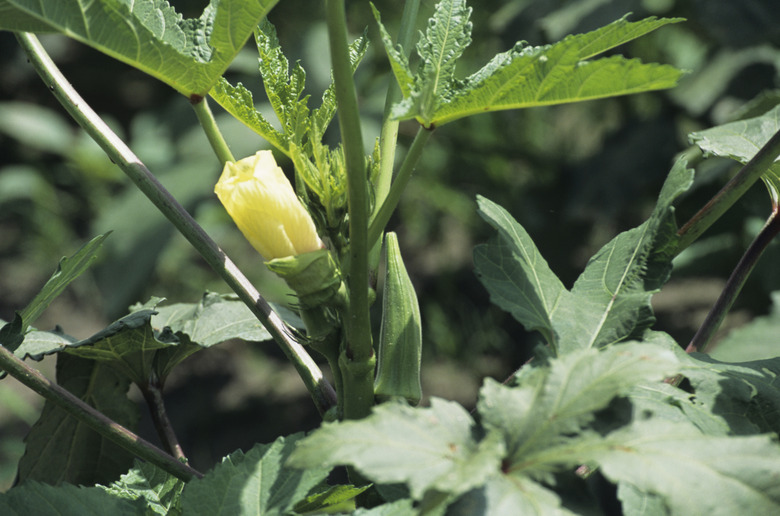How To Prune Okra Plants For Bush-Type Production
Kids may turn up their noses at the thought of a slimy mouthful of okra (Hibiscus esculentus), but when you grow the vegetable in your own garden, you can pick it for the best flavor and texture, when the pods are young and crisp. Okra is a warm-weather crop, seeded only when night temperatures are consistently above 50 degrees Fahrenheit. Because it takes less than two months to start producing, you can harvest the plant over a long period with proper pruning. Okra stalks can reach 8 feet tall. Pruning keeps the pods within reach of shorter gardeners, and persuades the stalk to form a bush with many more productive tips.
Step 1
Step 1
Disinfect the blades of your bypass pruners with household antiseptic cleaning spray and a paper towel, to avoid passing on any fungus or disease to your okra from the last plant you trimmed with the tool.
Step 2
Step 2
Put on gloves, and wear long pants and a long-sleeved shirt. Okra plants are covered with spines and tiny hairs that cause itching and a rash in some people.
- Kids may turn up their noses at the thought of a slimy mouthful of okra (Hibiscus esculentus), but when you grow the vegetable in your own garden, you can pick it for the best flavor and texture, when the pods are young and crisp.
Step 3
Step 3
Cut the tops of the plants back to 4 feet as they reach 6 feet. Make the cut on the main stem, just above a leaf node. Compost the tops of the plants.
Step 4
Step 4
Apply a fertilizer with plenty of nitrogen and potassium to encourage regrowth and branching. A granular 15-0-14 or 8-0-24 fertilizer worked into the soil at a rate of 6 ounces per 100 row feet is appropriate. Pruning may halt growth for about two weeks.
Step 5
Step 5
Cut the whole plant down to within 6 to 8 inches of the ground, leaving eight to 10 leaf nodes, in late summer in areas where you still have from 80 to 100 days until your first expected frost.
- Cut the tops of the plants back to 4 feet as they reach 6 feet.
- Make the cut on the main stem, just above a leaf node.
Step 6
Step 6
Fertilize again as in Step 4 to encourage leaf growth and multiple branches.
Tip
According to North Carolina State University Extension, the fall harvest on the now bush-style plant is often heavier than the first spring harvest.
Tip
You don't have to do both sets of prunings, though allowing the plant to develop naturally at first is recommended. If you've had all the okra you can handle after cutting it back to 4 feet, skip the second pruning; if your plants are topping out at 3 to 5 feet — as is often the case in cooler climates and with some cultivars — skip the first.
Tip
Okra is at its best when the pods are young, only three to five days after flowering. Keep pods picked, or the plant stops producing.
Warning
Even spineless okra cultivars are covered with tiny, itchy hairs. The itch lasts about 30 minutes if you work with okra without gloves or long sleeves.
Things Needed
- Gloves
- Bypass pruners
- Household antiseptic cleaner
- Paper towels
